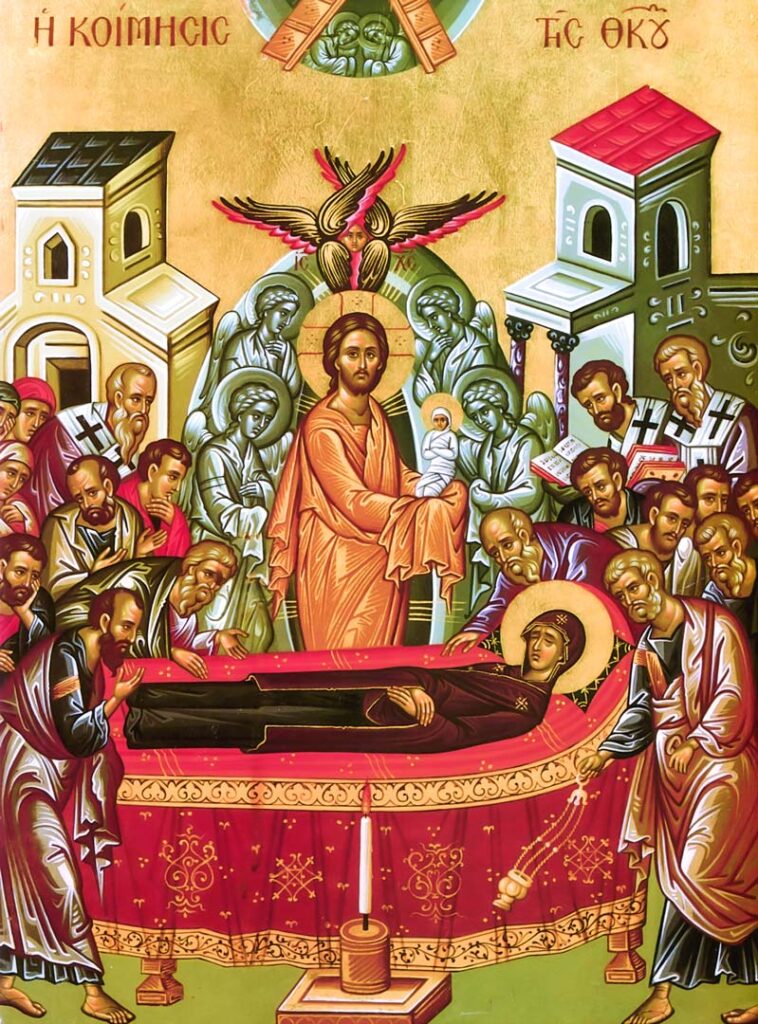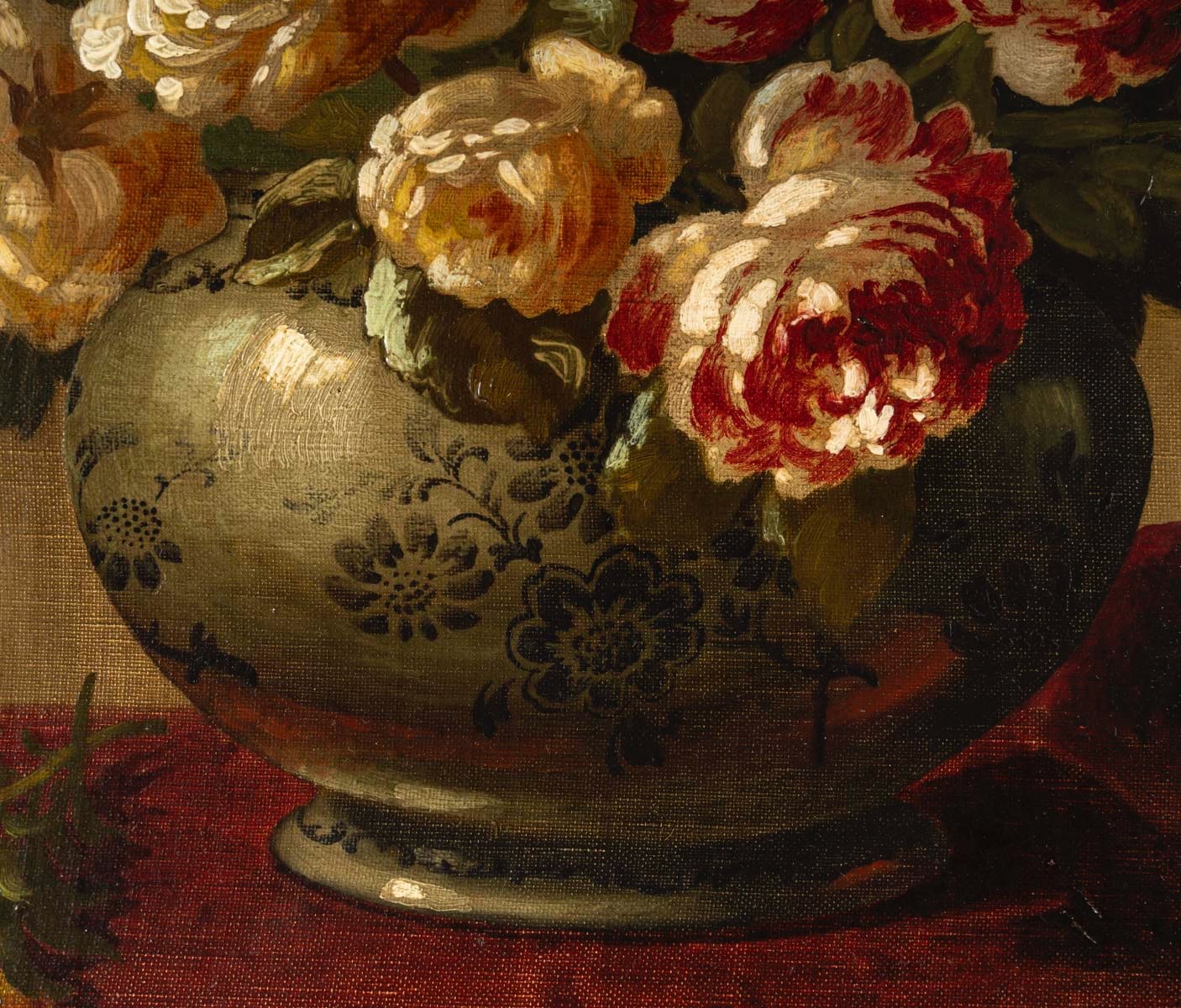This year the Great Feast of the Dormition unfolds under a sky with the Moon exalted in Taurus; the lunar current is strong, clothed in the earth. In her exaltation, she mirrors the role of Mary as the sacred container of the Light of the Logos, the Speculum Iustitiae in which divine justice reflects without distortion. To address the Dormition under such a sign is to contemplate the perfect rest of a body that has completed its course, the silencing of all motion so that the soul may ascend. The ancient image is of the vessel being set down, emptied of breath and, nevertheless, filled with glory.
I. The Mystery of the Falling Asleep
In the Dormition, the body lies in repose, kept as a reliquary, whereas the soul is taken into the fullness of the Divine. The apostles gather around the bed of Mary, and Christ Himself stands at the centre holding the soul of His Mother as a small child clothed in white. This reversal of roles contains a profound teaching: the one who bore the Logos in her flesh is now carried by Him into the realm of incorruption. The falling asleep is a direct participation in the Paschal mystery, an echo of the Sabbath rest of creation and the repose in the tomb before the Resurrection. This event is a mirror of the soul’s own journey, when the senses grow still and the interior light is carried beyond the limits of perception.

The exalted Moon in Taurus frames this rest as a completion of cycles, the sign’s earthy fixity granting the repose a weight and beauty that speak of consummation. Just as the Moon embraces the light of the Sun and gives it form, so Mary, at her Dormition, gathers the Divine radiance within and offers it back in silence. This is the consummation of the vessel’s purpose: to return what was entrusted, now transfigured by Love, and not to hold it forever.
II. The Depths and the Watcher
Psalm 130 holds a special place in the liturgy of the Dormition: De profundis clamavi ad te, Domine. The voice comes from the depths, not from the mountain peak. It is the cry of one who knows the gravity of their own condition, the darkness of the waters that rise to the neck. A call uttered with the certainty that the One addressed is already listening. The psalm becomes descent and ascent: descent into the recognition of need, ascent in the trust placed in Divine mercy.
At the Dormition, this psalm is the soul’s own utterance as it leaves the body. The depths are more than the realm of shadow, since they are also the place of gestation, where the seed is hidden until emergence. The psalm is therefore a vigil. The speaker waits for the Lord more than the watchers wait for the morning. The watchman knows that dawn will come; the soul in the Dormition knows that the Bridegroom is already on the way.
The imagery of depths also aligns with the lunar current. The Moon governs the tides and draws the waters in the world and soul. In Taurus, those waters are steady, bearing the soul with the calm persistence of a river that knows its destination. The De profundis under this light is a surrender without panic, the acknowledgement of being borne by a current greater than the self.
III. Custody of the Vessel
The body of Mary in the Dormition is treated as a sanctuary, a temple that, although emptied of the soul, retains its consecration. This has direct application: the body, even when stilled, is vessel to be honoured. In the Dormition, the Church venerates the whole person – body and soul – recognising that Grace has touched matter itself.
Psalm 130 hence becomes the chant of those who remain in vigil. The repetition of its lines is like the swinging of a censer, a movement that honours and protects. The one who has gone beyond hearing in the earthly sense is still accompanied by the resonance of prayer. The watchers become part of the passage, their faith a bridge that carries the beloved across the unseen threshold of glory.
The exalted Moon seals this moment. In Taurus, she gives form to what is otherwise fleeting. The vigil has weight, fragrance, the tactile sense of presence. This is the lesson the Dormition impresses on those who contemplate it: the Sacred does not abandon what it has inhabited. The tranquil rest of Mary is a sign that the body itself can be transfigured, and that matter, once consecrated, remains Holy even in stillness.
Fiat Lux.
